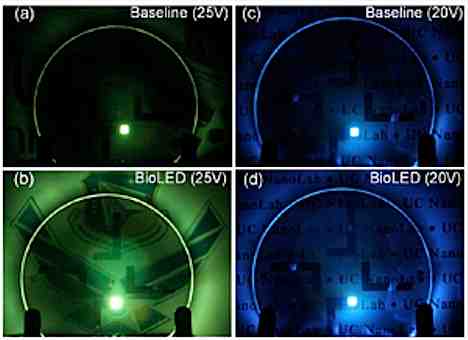
By Evan Ackerman
I have to admit that sperm is only the second thing that leaps to mind when I think about LEDs. Not so for Professor Andrew Steckl, an expert in light-emitting diode technology from the University of Cincinnati. It turns out that you can enhance LEDs by using biological membranes to slow down electrons, getting them to emit more photons:
“DNA has certain optical properties that make it unique. It allows improvements in one to two orders of magnitude in terms of efficiency, light, brightness — because we can trap electrons longer. Some of the electrons rushing by have a chance to say ‘hello,’ and get that photon out before they pass out. The more electrons we can keep around, the more photons we can generate. DNA serves as a barrier that affects the motion of the electrons.”
So, where can you get a whole bunch of DNA for cheap? Two words: salmon sperm. “Salmon sperm is considered a waste product of the fishing industry. It’s thrown away by the ton. It’s natural, renewable and perfectly biodegradable.” Any sort of DNA will potentially work just as well, but I’m not even going to touch that one. “I’m receiving salmon sperm from researchers around the world wanting to see if their sperm is good enough,” says Professor Andrew Steckl. Um, good luck with that.
[ Salmon Garnish Points the Way to Green Electronics ] VIA [ TreeHugger ]



finally, a good use for sperm.
besides babies
of course
Good news…another step will result in a leap.